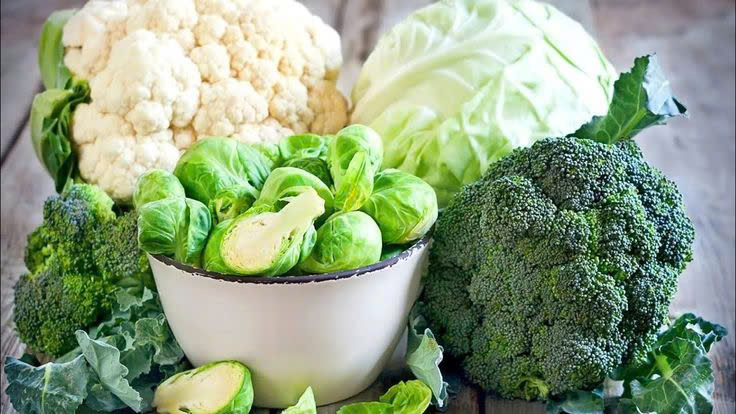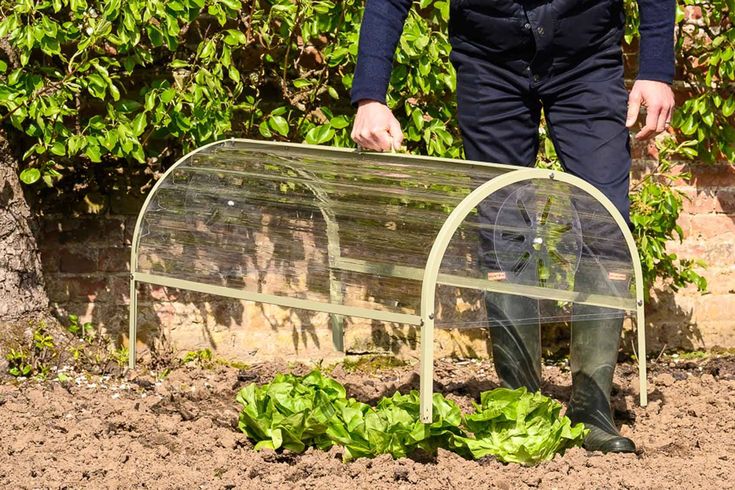Discover expert strategies for growing perfect Brassicas at DH Garden Centre. Learn timing, watering, fertilizing, and pest control tips to harvest exceptional cauliflower, cabbage, broccoli, and more for your Canadian garden.
Brassicas have long been both a gardener’s challenge and a culinary delight. At DH Garden Centre, we know the frustrations and triumphs that come with growing these nutrient-packed vegetables. In this comprehensive guide, we’ll share expert tips and personal insights to help you transform your Brassica season into your best ever—whether you’re battling hot days, unpredictable weather, or common pests. Read on and join us in mastering the art of Brassicas!

Understanding the Brassica Family
Brassicas are a fascinating group of vegetables that belong to the species Brassica oleracea. Despite the dramatic differences between cauliflower, cabbage, broccoli, Brussels sprouts, and even kohlrabi, they are simply different cultivars bred over generations.
This botanical marvel demonstrates how selective breeding can transform the same species into a variety of shapes, textures, and flavors. For instance, cabbage forms a compact head of layered leaves, while broccoli produces tight clusters of unopened flower buds. Each cultivar offers its unique benefits, flavors, and nutritional profiles, making Brassicas a staple for healthy, organic cooking.
The Unique Challenges of Growing Brassicas
Many gardeners find Brassicas to be among the most demanding crops. Here are some common challenges and why Brassicas might have “evaded” you in the past:
-
Temperature Sensitivity: Brassicas are notoriously averse to heat. They thrive in cool, consistently moist environments, yet even a few hot days can cause them to bolt or mature too quickly.
-
Precise Timing: Planting Brassicas at the right time is critical. In warmer climates, a fall planting—harvesting in early spring—often works best, whereas in colder zones, late summer or very early spring plantings yield the best results.
-
Watering Woes: Too little moisture stresses the plant; too much can invite disease. Maintaining evenly moist soil is key.
-
Pest Pressure: Pests like aphids and the cabbage moth can wreak havoc on Brassica crops. Protecting your plants with row covers or cloches is often necessary.

-
Fertilizer Finesse: Brassicas are heavy feeders, especially in their early stages. They demand nitrogen-rich inputs but over-fertilizing too close to harvest can lead to pest issues.
Timing Is Everything
Successful Brassica growing begins with timing. Here’s how you can nail it for your region:
-
For Warmer Zones:
In areas where summers can get uncomfortably hot, start your Brassicas in the fall. By planting in fall, your crops have the advantage of cooler, more temperate weather as they mature. This allows for a harvest in early spring, when temperatures are ideal and the flavors are at their best. -
For Cooler Climates:
If you live in a colder region, consider planting in late summer to extend the growing season right into the fall, or opt for very early spring sowing. Timing your planting to ensure that your crops mature just before the risk of frost can lead to crisp, flavorful produce.
 This allows for a harvest in early spring, when temperatures are ideal and the flavors are at their best.
This allows for a harvest in early spring, when temperatures are ideal and the flavors are at their best.
Watering & Moisture Management
Maintaining the right moisture level is essential for Brassicas:
-
Evenly Moist Soil:
Brassicas require consistent moisture. The key is to water at the base of the plant rather than overhead, especially on hot days. This method cools the plant and prevents the leaves from overheating.
-
Drip Irrigation & Soaker Hoses:
These tools help maintain even moisture levels and minimize water wastage. Installing a drip irrigation system can be a game-changer in ensuring that your Brassicas get the steady hydration they need.
-
Morning and Afternoon Strategies:
Start your day by watering gently in the morning when the soil is cool. Then, on particularly hot afternoons, a second light watering at the base of the plants can help keep them cool and prevent premature maturation.
Fertilizing for Lush, Healthy Growth
Brassicas are nitrogen-hungry, especially during the early stages of growth:
-
Organic Fertilizer:
At DH Garden Centre, we recommend using organic compost or a natural nitrogen-rich fertilizer to feed your Brassicas. An inch or two of compost spread around the plants at planting time will sustain them throughout the cooler season.
-
Feeding Schedule:
It’s best to feed the plants early in their development and then gradually reduce fertilization as harvest time approaches. Overfeeding, particularly with nitrogen, can lead to an unwanted buildup of aphids or even trigger excessive leaf growth at the expense of the main head.
-
Balanced Nutrients:
While nitrogen is crucial, ensure your soil is well-balanced with phosphorus and potassium. This balance supports strong root systems and overall plant health.

While nitrogen is crucial, ensure your soil is well-balanced with phosphorus and potassium.
Pest Control: Defending Your Garden
Even the best-planned Brassica gardens can fall prey to pests. Here are some effective strategies:
-
Cabbage Moth and Aphids:
One of the most persistent threats to Brassicas is the cabbage moth, whose caterpillars can devastate your crop. Floating row covers or shade cloths act as physical barriers, preventing these pests from laying eggs on your plants.
-
Integrated Pest Management:
Using organic pest control measures like neem oil or insecticidal soap can help keep aphids at bay without harming beneficial insects.
-
Regular Inspection:
Keep a close eye on your Brassicas, especially during warmer days when pests are more active. Early detection and treatment are key to preventing a full-blown infestation.
Techniques for Harvesting Perfect Brassicas
A well-timed harvest ensures that you enjoy Brassicas at their peak flavor and nutritional value:
-
Harvesting Tools:
Using a sharp, quality knife—like a Felco or hawk’s bill knife—ensures clean cuts without damaging the plant. This is especially important for crops like broccoli, where the integrity of the compact florets is key.
-
Ideal Harvest Time:
Harvest your Brassicas when the heads are fully formed but before they start to separate. For cauliflower, this might mean carefully folding the outer leaves over the head to protect it from sunlight, thereby preserving its pure, mild flavor.
-
Multiple Harvests:
With crops like Brussels sprouts, remember that not all parts of the plant mature simultaneously. Harvest the smaller sprouts that develop along the stem for extra yield without compromising quality.

Harvest your Brassicas when the heads are fully formed but before they start to separate.
Variety Selection: Choose What Grows Best in Your Climate
Not all Brassicas are created equal. Selecting the right variety for your region is a crucial step:
-
Heat-Tolerant Varieties:
If you live in a warmer area, opt for cultivars specifically bred for heat tolerance. Varieties like BELSTAR have shown promise in warmer climates, providing a more resilient option for gardeners facing high temperatures.
-
Regional Recommendations:
Speak with experts at DH Garden Centre or consult local gardening groups. Often, the best-performing cultivars are those that have been tried and tested in your area’s specific conditions.
-
Experimentation:
Don’t be afraid to try different varieties. Sometimes the “failure” of one crop provides valuable insight, leading you to discover the perfect Brassica that thrives in your garden.

Varieties like BELSTAR have shown promise in warmer climates, providing a more resilient option for gardeners facing high temperatures.
Personal Insights: My Best Brassica Year Yet
I’ve experimented with countless Brassica crops over the years—growing everything from cabbage and cauliflower to broccoli and Brussels sprouts. Each season has brought its own set of challenges and lessons. One year, despite growing hundreds of pounds of potatoes and other vegetables, nothing frustrated me more than Brassicas. I made every mistake imaginable—planting at the wrong time, mismanaging watering, and battling persistent pests.
But with each failure, I refined my approach. By focusing on timing, moisture management, and pest control, this year is shaping up to be my best Brassica season yet. I’ve learned to embrace the process, celebrate small victories (like that gorgeous, tight head of cauliflower), and share my journey so you can avoid the pitfalls I encountered.
Bringing It All Together: Your Brassica Success Story
At DH Garden Centre, we’re passionate about empowering plant lovers with the knowledge to create thriving, sustainable gardens. Growing Brassicas might seem daunting, but with the right strategy and a bit of patience, you can transform these challenging crops into a rewarding harvest.
Remember these key takeaways:
-
Timing: Plant Brassicas when temperatures are cool—fall for warmer regions, early spring or late summer for cooler ones.
-
Watering: Maintain evenly moist soil by watering at the base of your plants using drip systems or soaker hoses.
-
Fertilizing: Feed your crops with organic, nitrogen-rich compost early on, then taper off as harvest approaches.
-
Pest Control: Use row covers, natural pesticides, and regular inspections to keep pests like cabbage moths and aphids at bay.
-
Harvesting: Cut your crops at the right moment for optimal flavor and nutritional content, using quality tools for a clean harvest.
-
Variety Matters: Choose the cultivars best suited to your local climate, and don’t be afraid to experiment to find your perfect match.
Embrace the challenge, learn from each season, and soon you’ll be enjoying a bountiful Brassica harvest that not only tastes incredible but also nourishes your body and soul.

 This allows for a harvest in early spring, when temperatures are ideal and the flavors are at their best.
This allows for a harvest in early spring, when temperatures are ideal and the flavors are at their best.